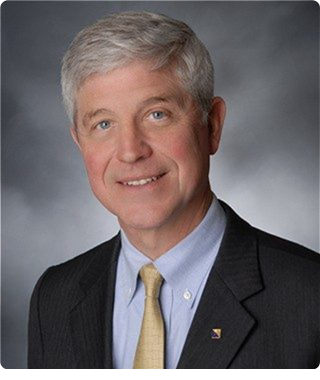Annual Report 2021
CEO’s Message
Resilience, Agility and Adaptability

In many ways, 2021 was a year in which the American Chemical Society (ACS) needed to adapt to change. I am pleased to say that we rose to the challenge.
We went into the year expecting to either return to normal or move on to a new normal, thanks to the rollout of vaccines against COVID-19. That scenario did not play out as we had hoped, but the learnings from 2020 allowed us to adapt to the continuing pandemic with skills that we hadn't had even a year earlier.
I will use our ACS meetings as one example. Early in 2020, as the pandemic initially spread, we terminated the spring meeting, which was scheduled to take place in Philadelphia in March. By August of 2020 we had regrouped, and we hosted our first-ever fully virtual biannual meeting. It was a little rough, but I think people appreciated the opportunity to come together, even if only digitally.
The experience of the first virtual meeting helped us plan our second virtual meeting, ACS Spring 2021. This time, our customers said they wanted live rather than pre-recorded sessions, and they wanted to access them via Zoom. We listened, and as a result, we had a more successful conference. The number of registrations and presentations rose by almost 50% versus the fall 2020 meeting. In addition, 85% of the spring 2021 attendees indicated they would recommend future ACS meetings to others, compared with just 51% of the fall 2020 attendees. By August 2021 we had ambitions to return to a predominantly in-person gathering, but the rise of a COVID variant dampened those hopes. Nevertheless, our first-ever hybrid meeting proved successful.
Adaptability also featured in our approach to our membership model. For nearly 150 years, ACS membership has been associated with a single, prescribed set of benefits. But in 2021, with the support of the ACS Board of Directors and the ACS Council, we developed a new membership model that allowed for different packages of benefits at different dues levels. We introduced those new tiers at the end of the year.
Also at year-end, the board approved the largest program that ACS has ever launched. Over the next five years, we will commit $50 million to four strategic initiatives that are aligned with our vision and mission: advancing the campaign for a sustainable future (to address challenges articulated in the U.N. 2030 Sustainable Development Goals), fostering the technical workforce, enhancing the accessibility of research data and extending CAS’ presence into the life sciences.
This investment is possible because of ACS’ fiscal strength. In 2021, we continued to meet all five of our financial objectives, and we built our unrestricted net assets. That solid performance gives us the confidence that the organization could overcome a rainy day if it were to arrive. It also allows us to pursue and potentially expand programs such as these new strategic initiatives.
In another significant development last year, the Society established the ACS Office of Diversity, Equity, Inclusion and Respect (DEIR). This step represents just one way in which we have acted on our goal of embracing and advancing inclusion in chemistry. We also looked at actions that we could take within our staff and volunteer leadership, as well as resources that we could bring to our membership and the broader chemistry enterprise. For instance, ACS improved diversity through our journal and committee appointments and staff hires. And we convened our first summit of chief diversity officers from the chemical industry. Discussions during the summit led us to bolster our STEM careers awareness project, which had been initiated by the chief technology officers who regularly meet with ACS.
We formed a diversity roundtable with leaders from ACS and from partner societies, including the National Organization for the Professional Advancement of Black Chemists and Chemical Engineers, the American Indian Science and Engineering Society, and the Society for Advancement of Chicanos/Hispanics and Native Americans in Science. We prepared an ACS Inclusivity Style Guide that is attracting interest at other organizations. And we expanded collection of diversity data so we can evaluate our efforts. Although we can't yet say that we have achieved inclusion in chemistry, we are making progress.
The new Office of DEIR was not the only organizational change that occurred in 2021. We also brought together Chemical & Engineering News, the communications office, the acs.org website team, and our webinars and video production functions to form a new Communications Division. This move has allowed us to leverage our communication efforts across the Society for both internal and external audiences.
The Publications Division and Education Division worked together to launch the ACS Institute, a platform that offers online learning and training resources for the chemistry community. Meanwhile, the Publications Division completed its initiative to support authors with the introduction of nine new open access journals to accompany JACS Au (pronounced “JACS Gold”), the fully open-access counterpart of our flagship journal.
Governance, too, underwent changes in 2021. ACS altered its governing documents to standardize and simplify its committee system. Specifically, all are now “Society Committees,” and they each have the same size, term length, term limits and reporting requirements.
Further details about these and other accomplishments can be found online in the “2021 Highlights of ACS Achievements.”
I would like to close by saluting our volunteers, who contributed to the success of the Society in so many ways — whether in local sections, technical divisions, committees, or other settings. Like ACS as a whole, they showed dedication and flexibility in the face of the challenges that cropped up throughout 2021. In the end, the ability of ACS and its members to cope and pivot, despite the pandemic, led to an extremely successful year.
